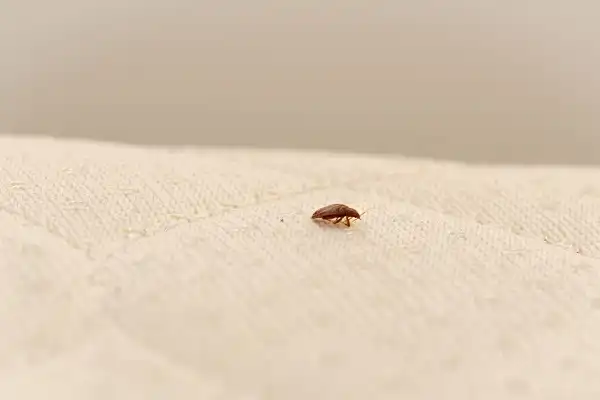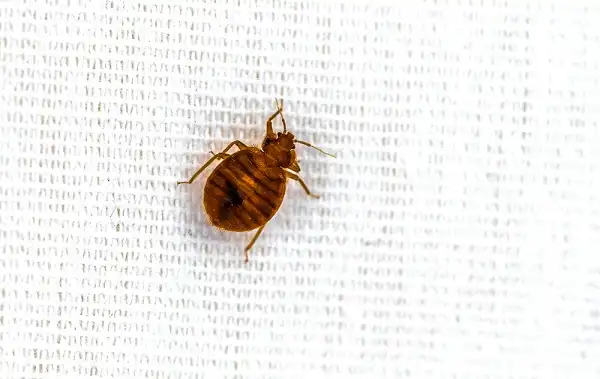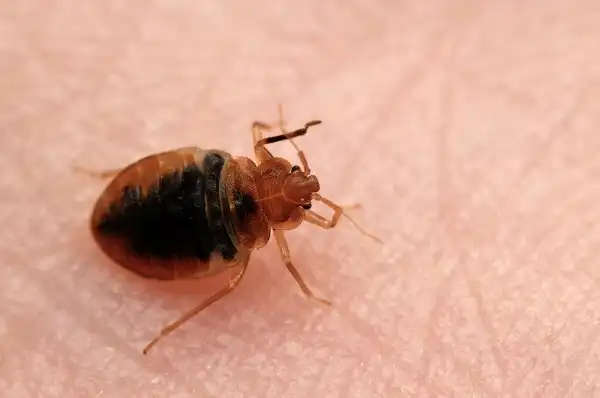Nothing is more unsettling than the thought of bed bugs in your home. These small pests can cause big disruptions and it’s essential to know how to identify them, prevent an infestation, and get rid of them if you find yourself faced with a bed bug issue. That’s why today we’re talking about everything related to bed bugs: what they look like, where they hide, and how best to tackle this frustrating pest problem. Let’s dive into all the details so that you can sleep soundly knowing exactly what to do when confronted with a potential infestation!

Bed Bugs Description
Bed bugs are small, flat-bodied insects that are a reddish-brown color. These pests are difficult to detect due to their size and coloration, which allows them to easily hide in the smallest cracks and crevices. Bed bugs have six legs, antennae, and two oval-shaped eyes. Additionally, they have a beak that they use to puncture the skin of their host in order to feed on their blood. Since bed bugs are nocturnal, they typically come out at night for their meals. When bed bugs bite humans, the area around the bite often swells and becomes red due to irritation from the bug’s saliva or excrement. Bites may also cause itching or even an allergic reaction in some people.
Bed Bugs Habitat
Bed bugs can be found in a variety of different environments, from homes and hotels to public transportation and movie theaters. They tend to hide in cracks and crevices in furniture, mattresses, bedding, walls, carpets, baseboards, and other objects. Bed bugs also prefer warm environments and are most commonly found near places where people sleep or rest. Bed bugs typically lay their eggs in areas that are difficult for humans to reach and clean. This includes mattresses, box springs, bed frames, headboards, wallpaper seams as well as other items near the bed such as nightstands or dressers. Other common sites for bed bug infestations include couches, chairs, light switches, and electrical outlets. Because they are so small they are able to hide in even the tiniest of cracks or crevices. These pests typically migrate from room to room through tiny cracks in walls or floors or via clothing or linens that have been brought into the new environment temporarily. Additionally, if there is a large infestation present they may travel through ventilation systems found in the home. Bed bugs typically feed on human blood but can also feed on pet blood if necessary which makes it easier for them to spread quickly through an area.
Bed Bugs Diet
Bed bugs feed on human blood, and they are most active at night when people are asleep and not aware of them. These pests have a specialized mouth part that punctures the skin to suck up blood from their victims. They can survive for one year without feeding, but their preferred diet is human blood. While they may occasionally feed on pet or rodent blood, these instances are rare. Bed bugs do not need to eat every day and will typically feed every 5-10 days. When they do feed, however, bed bugs can consume up to 3 times their body weight in a single meal. This means that an adult bed bug can take in up to seven milligrams of blood at a time, resulting in swollen red bites on the skin of its victim. Bed bugs digest their meals using enzymes found in their saliva which helps them break down the proteins in human blood. They cannot survive on any other type of food, so eliminating food sources like stored grain or pet food will not help control a bed bug infestation.

Bed Bugs Size
Bed bugs are small insects, measuring approximately 3/16th of an inch long and 1/8th of an inch wide. These pests are relatively flat-bodied and range in color from a light tan to a dark brown. Their size makes them difficult to detect with the naked eye, but they can be easily spotted if you know what you’re looking for. Bed bugs have six legs, antennae, and two oval-shaped eyes. Adult bed bugs can swell to as large as 5 millimeters long after feeding on human or animal blood, making them visible even with the naked eye.
Bed Bugs Lifespan
Bed bugs can live up to 1 year without feeding on blood. During this time they typically remain dormant between meals but will swiftly emerge if a potential host is available nearby. Bed bugs reach maturity within 7 weeks after hatching from their egg sacs, and during their lifespan, they can lay up to 500 eggs in total. Bed bugs are survivors and have been known to survive for long periods of time without food or water. They are capable of living for months at a time in unfavorable conditions such as cold temperatures or dry climates. Additionally, bed bugs can enter a state of dormancy where they slow down their metabolism and stop feeding when environmental conditions become unfavorable. This type of dormancy allows them to survive until more hospitable conditions arise that allow them to resume normal activity.
The lifespan of bedbugs can vary depending on the environment they inhabit as well as access to food sources. If kept in an ideal environment with regular access to food sources, adult bedbugs can live an average life span of 1-2 years, while nymphs may only live for around 6 months before needing to molt into adulthood. In order for bedbugs to thrive, they must maintain some level of humidity and temperatures between 70°F – 80°F (21°C – 27°C).
Bed Bugs Behavior
Bed bugs are nocturnal creatures and typically hide during the day. They tend to come out in search of food when it gets dark and seek out soft, warm places to hide, such as mattresses, bedding, furniture, carpets, and other areas near where people sleep or rest. When it comes to feeding behavior, bed bugs are known for their aggressive approach. These pests use a specialized mouth part called a stylet fascicle which helps them penetrate the skin of their host. This allows them to feed on blood for up to three minutes at a time before needing to retreat and digest their meals. Bed bugs have also been known to exhibit some social behavior such as alarm communication and aggregation when threatened or disturbed by humans or predators.
Alarm communication occurs when one-bed bug releases a specific chemical from its body in response to danger which serves as a warning sign that alerts the other bed bugs nearby so that they can all quickly retreat into hiding spots until the threat has passed. Aggregation is when bed bugs group together in areas where they can easily access food sources such as beds or couches so that they can more easily access their next meal while minimizing the risk of being seen by predators or humans.

Bed Bugs Speed
Bed bugs are small, fast-moving pests that can maneuver through tight spaces and crawl on walls and ceilings with ease. They have six legs which enable them to move at speeds up to 3 feet per minute. This means that an adult bed bug can travel roughly 3 feet in just one minute. Bed bugs are also capable of making short jumps that can help them cover a greater distance in a shorter amount of time. Bedbugs will typically move quite slowly when looking for a host, but when they have located one they tend to move quickly so as to avoid detection or being squashed by their unsuspecting victim. When alarmed, bed bugs can run extremely fast and even climb onto walls or ceilings with ease, allowing them to escape from predators or humans who may be trying to exterminate them.
Bed Bugs Hunting
Bed bugs are adept hunters of human and animal blood, and they employ a variety of strategies to locate their food sources. Bedbugs have the ability to detect carbon dioxide which is emitted from hosts when they exhale, which helps them hone in on potential meals. They also use their antennae to pick up vibrations that may be caused by the movement of a host nearby. In terms of how they actually hunt, bedbugs typically move around slowly in search of a potential meal until one is found. They then rapidly climb on the host using their specialized claws and feed on their blood for up to three minutes before retreating back into hiding. Bedbugs can also travel long distances in order to find food sources and breed new generations of nymphs (baby bedbugs).
Bed Bugs Spreading Awareness
Bed bug infestations are an increasing problem in homes and buildings around the world, so it is important to be aware of the signs and symptoms of a bed bug infestation and how to prevent them from spreading. One of the best ways to spread awareness about bed bugs is through education. Educating yourself on the signs and symptoms of a bed bug infestation can help you identify a potential problem before it becomes more serious. Common signs include small blood stains or dark spots on sheets, mattresses, furniture, baseboards, and walls; red bites on your skin; a sweet musty odor; and live or dead bed bugs. If you suspect that you may have a bed bug infestation, contact a professional pest controller immediately. In addition to educating yourself on the signs of an infestation, it is also important to practice proper prevention techniques in order to reduce your risk of getting an infestation in the first place.
These strategies include using mattress and box spring covers for all beds in your home; vacuuming regularly; inspecting secondhand furniture before bringing it into your home; using integrated pest management (IPM) strategies such as using insecticides or traps only when necessary; dry cleaning your clothes and linens after traveling; washing all bedding materials on the hottest setting with detergent at least once per week; eliminating clutter where possible; storing clothes off floors and away from walls as much as possible; sealing cracks or crevices around baseboards, windowsills or other openings where bed bugs might enter; reducing clutter around beds or seating areas so that they can easily be vacuumed if needed.

Conclusion
Bedbugs are incredibly fast-moving insects that can travel long distances in order to locate food sources and breed new generations of nymphs. When searching for food, these pests employ a variety of strategies such as detecting carbon dioxide and vibrations from hosts nearby. Although they tend to move slowly when looking for a host, once one is located bed bugs will move quickly so as to avoid detection or being squashed. In order to prevent an infestation of bed bugs, it is important for homeowners or other occupants of buildings to inspect any furniture or soft furnishings regularly for signs of bed bug activity.
Frequently Asked Question


